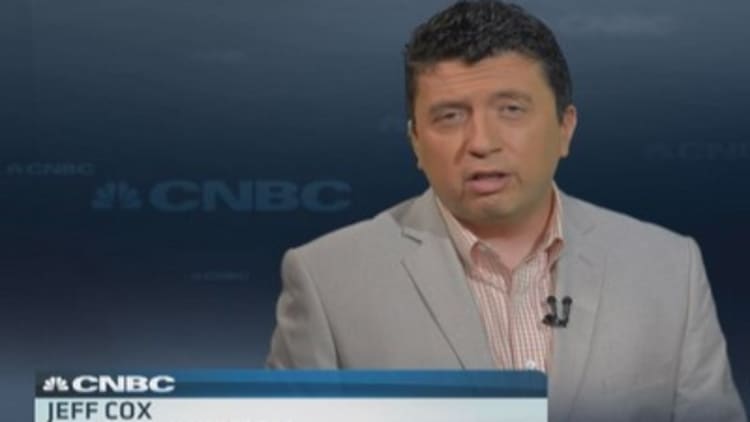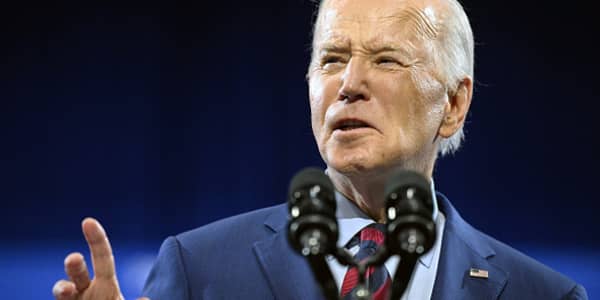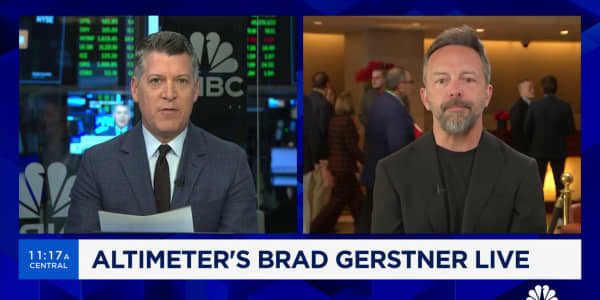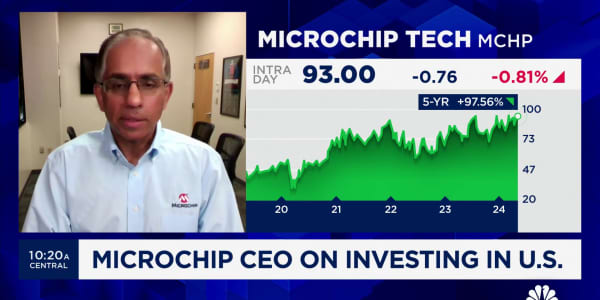
Exchange-traded funds have exploded over the past several years and investors literally can't get enough.
In fact, respondents to a recent survey from Charles Schwab said the industry needs to grow even more, with 66 percent saying there's room for still more ETFs. The sentiment comes at a time when both the total amount of funds and the assets investors are plowing into them are increasing rapidly and investor appetite just seems to grow stronger.
"The industry's changing. There's innovation that's going to be needed," Michael Iachini, Schwab's managing director of ETF research, said in an interview. "We think more product means more competition and better pricing."
Indeed, it's pricing that has brought many people to ETFs and swelled assets under management globally to $2.6 trillion and domestically to $1.86 trillion, according to State Street, which is the second-largest issuer of the funds with $406 billion under management.
ETFs as an industry have much lower fees than their mutual fund counterparts. They're also more liquid in that they can be traded during the day like stocks—mutual funds can only be bought and sold outside regular market hours—and boast tax advantages as well.
Read MoreETFs vs Mutual Funds: Explaining the difference
As a result, the two groups are heading in opposite directions, even though the mutual fund industry is still much larger. Mutual funds globally have $15.4 trillion under management, with about $9.4 trillion of that in domestic assets. Over the past 12 months, though, ETF assets have expanded by 19.8 percent while mutual funds have lost 10.7 percent, according to data from the Investment Company Institute.
Industry experts believe ETFs still have a long way to run.
"Product development is the No. 1 question that the ETF industry wrestles with. Their sentiment mirrors what you saw in the Schwab survey," said Nicholas Colas, chief market strategist at brokerage ConvergEx. "They think there's a lot more room in growth for the total number of issues in ETFs."
While the industry is flooded with products that track basic indexes like the and the Nasdaq, there is a growing demand for more exotic instruments.
Read MoreA year of winners (and losers) post-'Alpha'
Some of those products use leverage to short various sectors; still others focus on particular strategies, while experts predict fixed income ETFs will be on of the biggest demand areas.
"Industries at critical mass in terms of assets under management then look to grow by product manufacturing," Colas said. "They look to fill every single possible niche. There are a lot of creative minds thinking about what incremental products would resonate with people."
That new demand and supply, though, could present challenges to regulators and investors.
As products get more complex there will be a growing need for investor education, something State Street is doing with a site called ETF Ed, which provides direction on how to invest in exchange-traded products.
"It's incumbent upon ETF sponsors and the investing public to understand and do their due diligence," said Dave Mazza, head of research for the SPDR class of ETFs that State Street sponsors. "We can think about peeling back the onion and understand what you might want to expect from a performance perspective."
Investors, though, feel they know enough about ETFs, with 71 percent in the Schwab survey confident they can pick the right fund, though 40 percent say they'd still like to know more
Read More 7 ways you can tackle high fees
The attraction to ETFs over managed funds is at least somewhat curious in that the former almost by their very nature are designed to underperform the market, as they simply follow indexes in a passive manner then charge fees, however small, to do so.
In fact, a recent post on ETF.com from Paul Britt found that so far in 2014 just 15 of 425 equity ETFs have provided alpha—or returns above their benchmarks when adjusted for risk.
Ultimately, Mazza thinks the passively and actively managed fund universes will coexist, with investors using passive funds for diversification and safety and managed funds to steer through more volatile sectors like small-cap stocks and certain fixed-income areas.
"Investors are increasingly looking for the ability to add excess returns to their portfolios but in a low-cost systematic fashion," he said.






